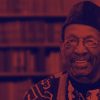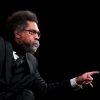
When John Coltrane succumbed to liver cancer in 1967, he was at the forefront of the jazz world. No saxophonist was more admired by his peers or beloved by his fans. Coltrane was only 40 years old, but he was a genuine jazz hero who had somehow crammed a whole career of innovation and experimentation into the previous decade.
Coltrane’s death cut short his music-making, but hardly put a dent into his popularity or influence. You couldn’t escape it, no matter where you went. In the late ’70s, I lived in Tuscany for a half-year, and every month picked up a copy of Musica Jazz, the Milan magazine that covered the Italian jazz scene. Each issue included a listing of the best-selling jazz records in Italy, and every month without fail John Coltrane’s A Love Supreme was at the top of the chart—even though the album was more than a decade old and from half a world away!
I recall another telling incident, this time from the late ’80s, when I spent a day auditioning saxophone students for a music scholarship, and noted with interest that every one of these youngsters seemed to have chosen John Coltrane as a major influence. Yet not one of them was old enough to have heard him perform in person. At that juncture, it was hard to find any aspiring saxophonist, especially on tenor or soprano, who wasn’t a Coltrane acolyte.
I couldn’t blame them. Most of us immersed in jazz, myself included, were still focused on trying to understand and assimilate what Coltrane had left behind. In fact, we were so focused on his legacy that we spent little time wondering what he might have achieved if he had lived longer. At times, it even seemed as if this remarkable improviser had said everything he could possibly say on the horn. Even if he had survived into old age, how could an artist with so much music at his command have done anything more than repeat himself?
But a newly-released live album made during the final months of Coltrane’s life forces me to revisit the question of what this path-breaking artist might have achieved if he had hadn’t fallen victim to cancer. This surprising music, recorded in concert at Philadelphia’s Temple University in November 1966, has long been known to Coltrane devotees—mostly through word-of-mouth, although poor-quality bootlegs have occasionally circulated. Now Resonance Records, in partnership with Coltrane’s label Impulse, has released the complete concert on a double CD under the title Offering: Live at Temple University. Finally jazz fans can judge this unusual music for themselves.
The Temple University concert represented something of a homecoming for Coltrane. In his mid-teens he had moved to Philadelphia, and had gigged extensively in that city before getting the call to join Miles Davis’s band in 1955. Now more than a decade later, Coltrane was returning to Philadelphia as a world-beating sax star and the most famous exponent of the avant-garde movement in jazz.
But the audience at Temple University wasn’t going to give Coltrane a home town hero’s welcome. Even before the first number was finished, audience members started walking out. Others “looked as though they wanted to leave but sat rigid with disbelief,” according to jazz critic Francis Davis, who was in attendance that evening.
The recording leaves us in no doubt as to the reason for this response. Even by Coltrane’s standards, this music was transgressive and disturbing. At a now famous moment during the concert, Coltrane even put aside his saxophone to sing and pound on his chest—almost as if he had exhausted everything the horn could do, and needed to return to that most primal musical instrument of them all, the human body.
Listening to this performance almost a half-century after it took place, I still lack coordinates from the jazz world with which to map it. Instead I am reminded of my studies of shamans and trance-inducing music, a subject that has been a key focus of my interest and research in recent years. At Temple, Coltrane no longer operated as a jazz artist improvising melodies, but more like a mystic on a vision quest.
Researchers such as Andrew Neher and Barry Bittman, among others, have confirmed what non-industrial societies knew long ago—namely that musical rituals have a tangible impact on the people who participate in them. Brainwaves change, body chemistry is transformed, even white blood cell count improves. The scientific and anthropological studies agree on two key ingredients: the music must include drumming for its full effect to be felt, and the “song” should continue for at least ten minutes.
I’m not surprised that both these elements figure prominently in Coltrane’s late career music. Songs got longer and longer. A typical number would last 20 minutes or more during this culminating phase of his musical evolution. And much of his most inspired playing, in his final years, came in the context of sax-drum duets. Coltrane now sometimes performed with multiple percussionists, as at the Temple University concert, even though many listeners found this rhythmic layering overly busy and distracting. But, like a traditional shaman, Coltrane clearly believed that the drums served as a springboard to a higher order of engagement.
This perspective helps me understand so many other peculiar aspects of Coltrane’s late career work. Many fans have wondered why Coltrane, at this stage, was so willing to invite guest performers, of varying levels of talent, to join him on stage. Or why he seemed to select accompanists based on his personal relationship with them, rather than for their musical skills. And why did he spend so much time in interviews talking about spirituality instead of his famous substitute chord changes and other musical matters? In fact, why did he seem so ready to abandon these same harmonic advancements, the very stepping-stones that had taken him to the forefront of the jazz world?
If you view Coltrane as the “great man of jazz,” these decisions make little sense. But if you view him simply as a “man of greatness” perhaps we can understand both his path and what he might have achieved if he had lived. Yes, we are rightly skeptical with heroes of any sort in the current day, and any reasonable person ought to hesitate before looking for gurus on the concert stage. But John Coltrane may be the exception to this rule.
He changed the entire art form, but anyone who spoke to Coltrane for more than a few moments could tell that his real goal was personal transcendence. With Coltrane, the line between individual transformation and musical advancement had always been a blurry one, but increasingly so in the final years of his life. You simply can’t understand his decisions on the bandstand or in the recording studio if you view them merely as aesthetic responses to musical challenges. Other, larger considerations inevitably intervened—spiritual, interpersonal, socio-political. And I can only see those aspects of his legacy deepening if he had lived into middle age and beyond.
So I have a hard time envisioning Coltrane jumping on the rock fusion bandwagon that swept through the jazz world in the months following his death. But I can easily imagine him performing at the 1971 Concert for Bangladesh or at other philanthropic music events. No, I can’t picture him participating in the retro jazz movement of the ’80s, which celebrated a return to the ’50s vocabulary that Coltrane himself had played a key role in subverting. But I can imagine him mentoring younger players, or helping to spur positive change in Africa, Asia, and other places where his musical, spiritual, and political instincts would have found fertile ground for growth and transformation.
When I conjure up a mental image of John Coltrane at age 50 or 60—or even 88, as he would be if he were still alive and able to celebrate his birthday this month—I still see him with a saxophone in hand. But only some of the time. I suspect that he would have found ways to make a difference in the world even without a horn. And, most of all, I’d like to think that some of followers—and in the jazz world their numbers still are legion—would have followed him down that promising path.














